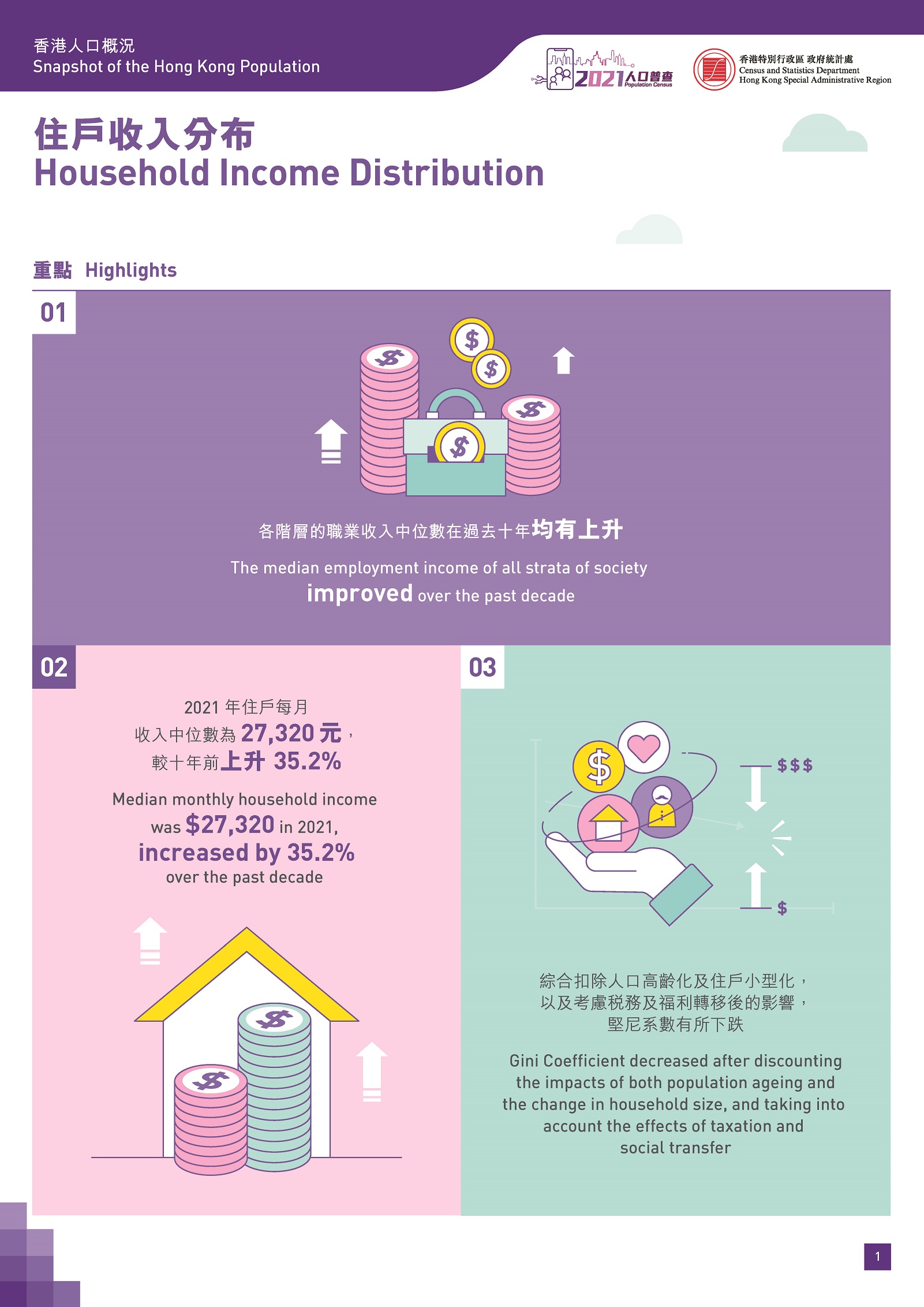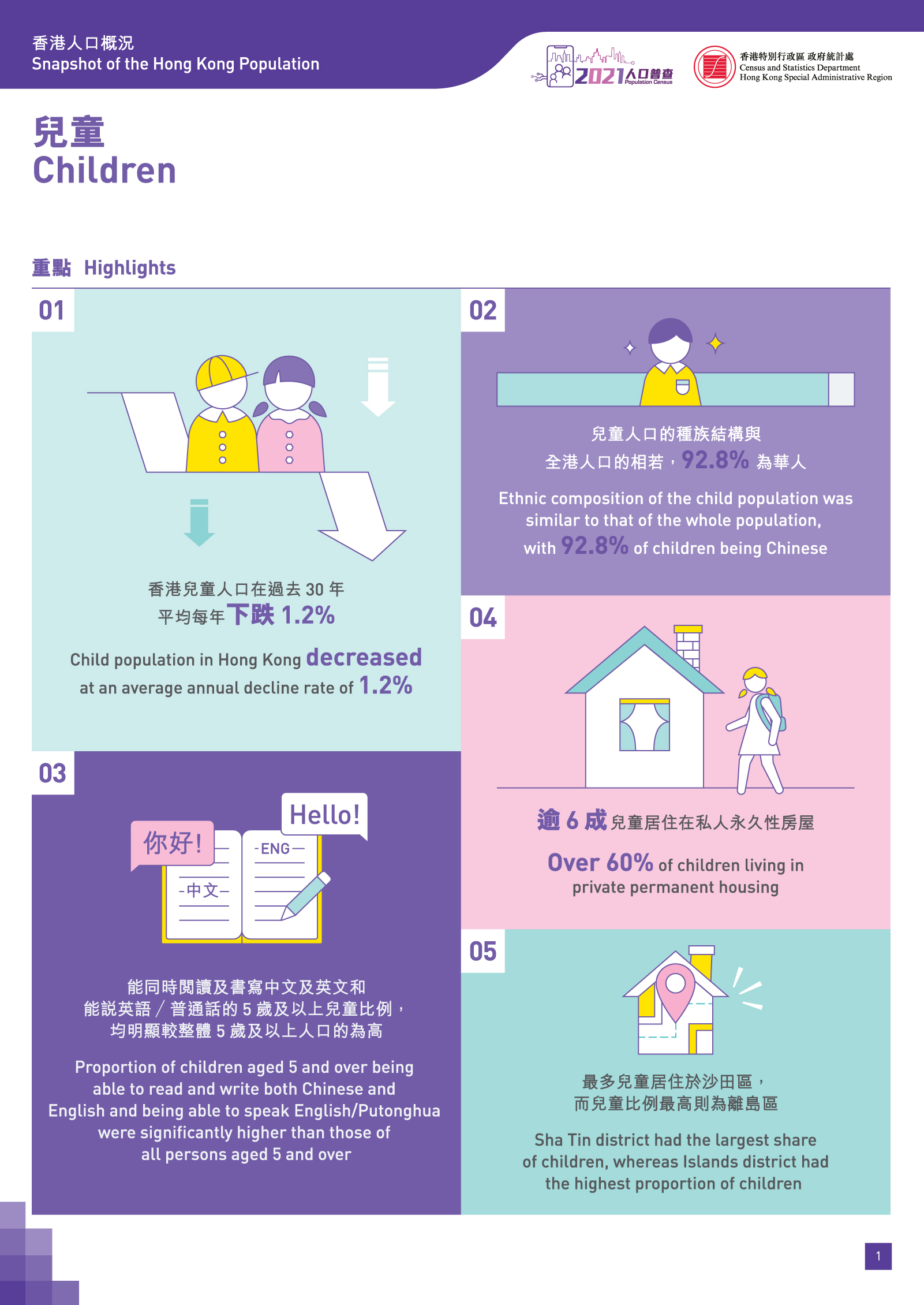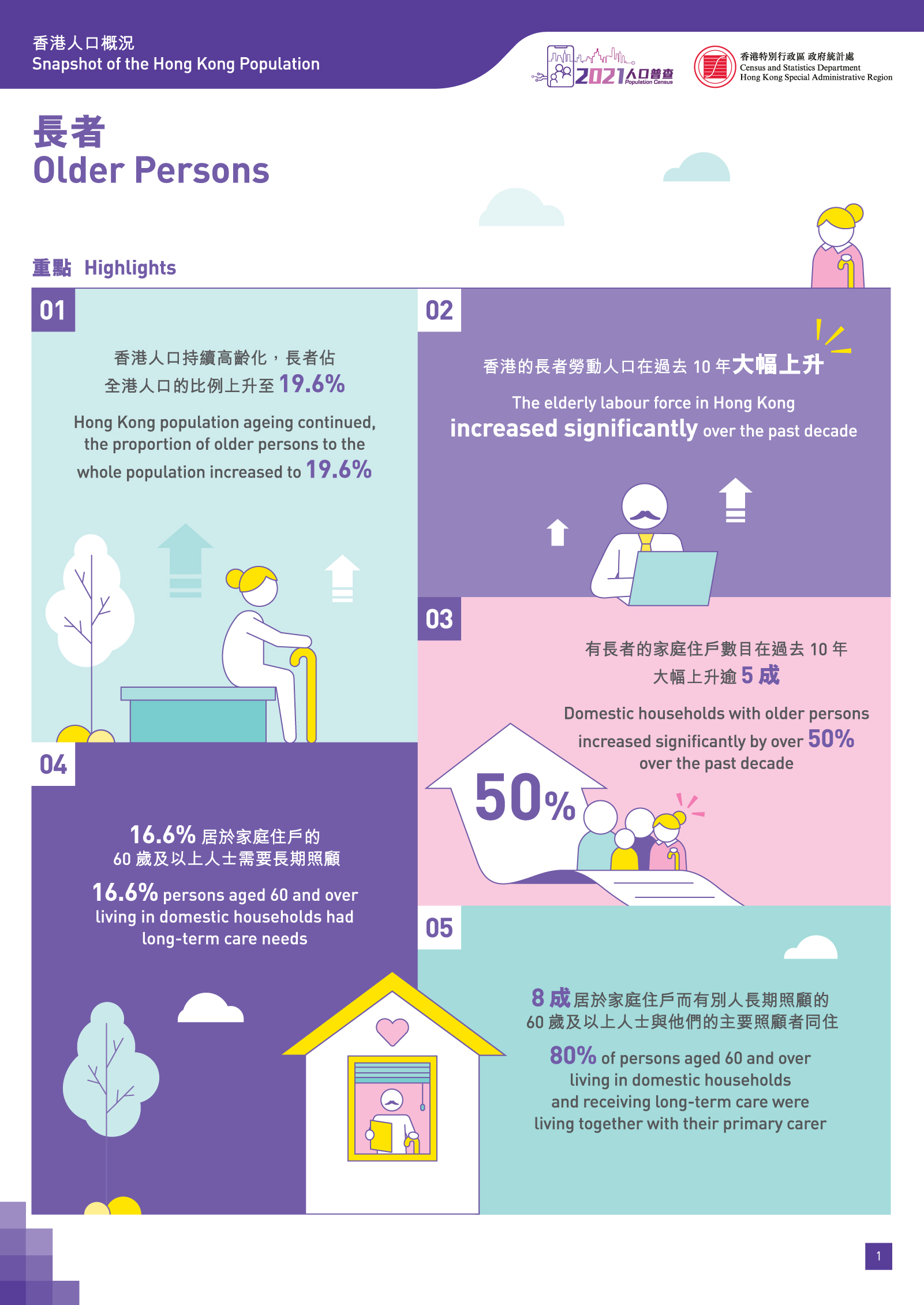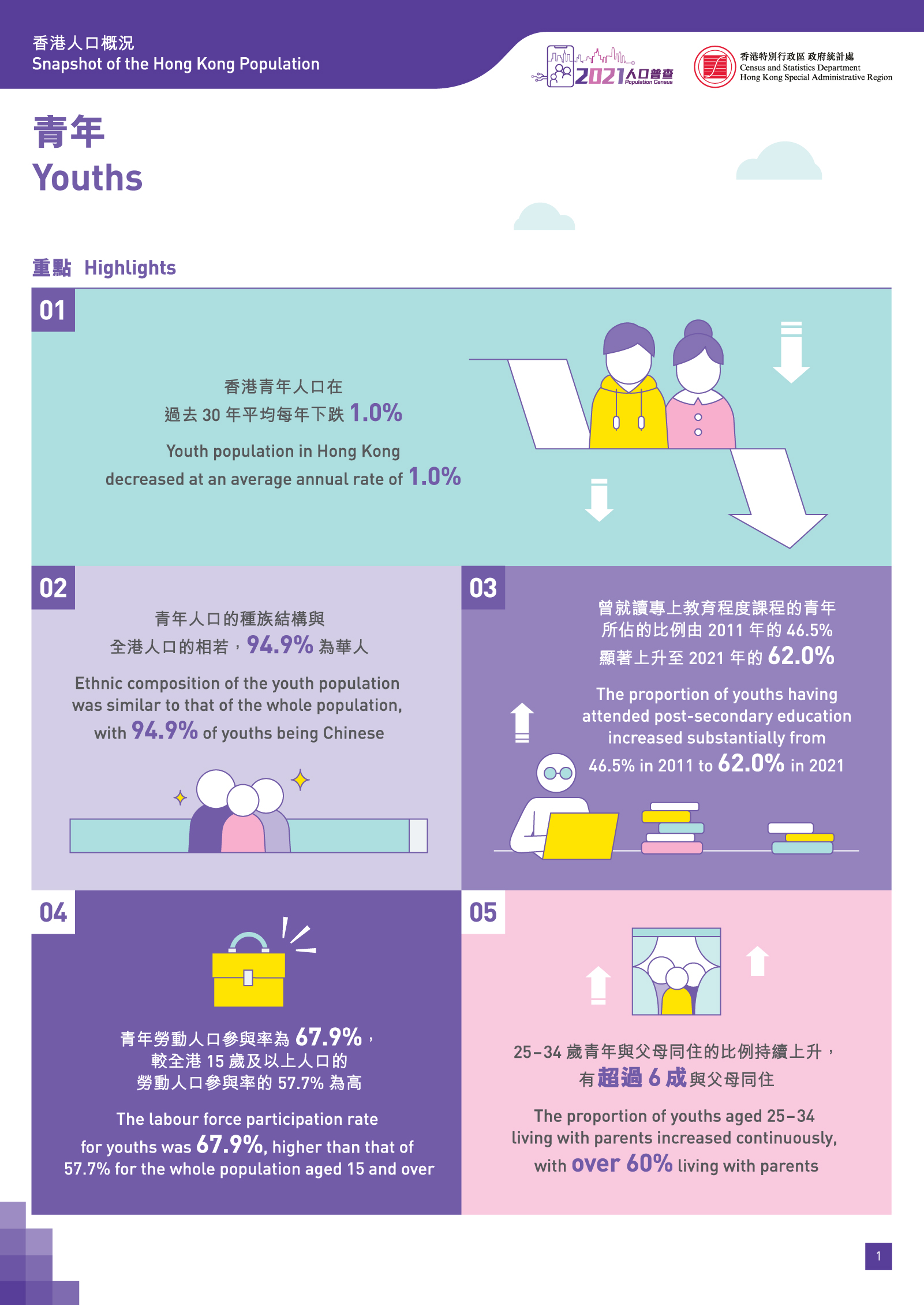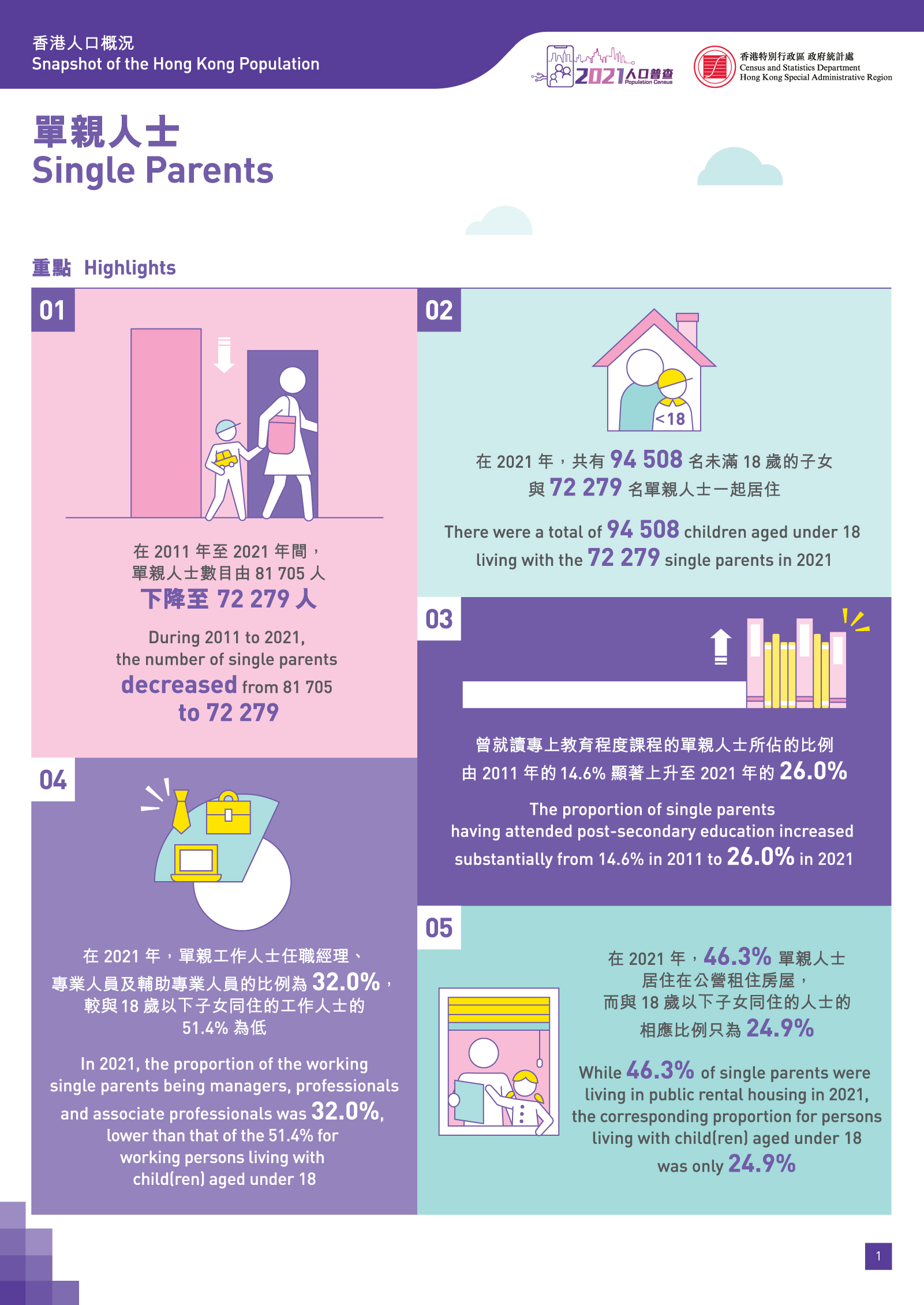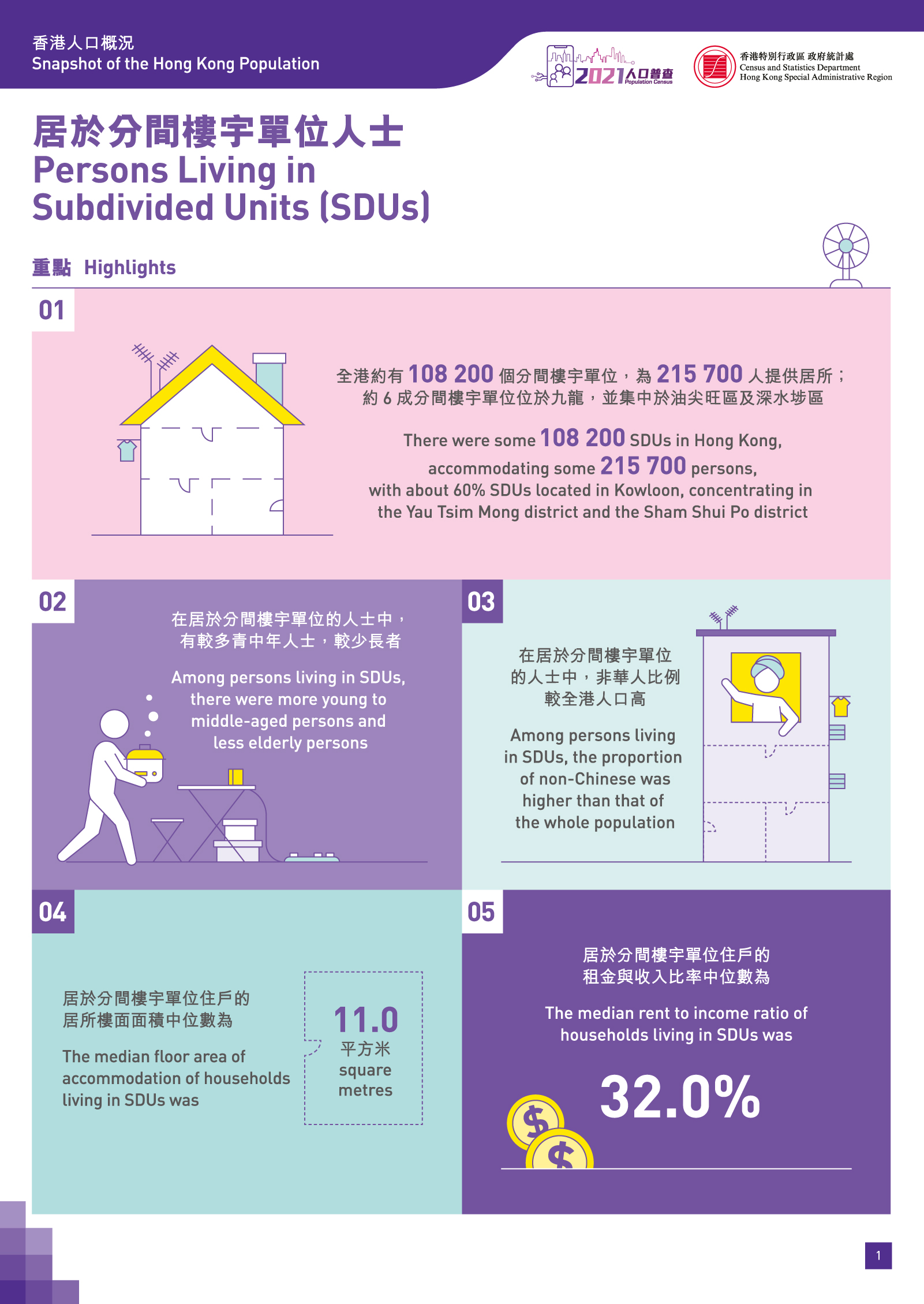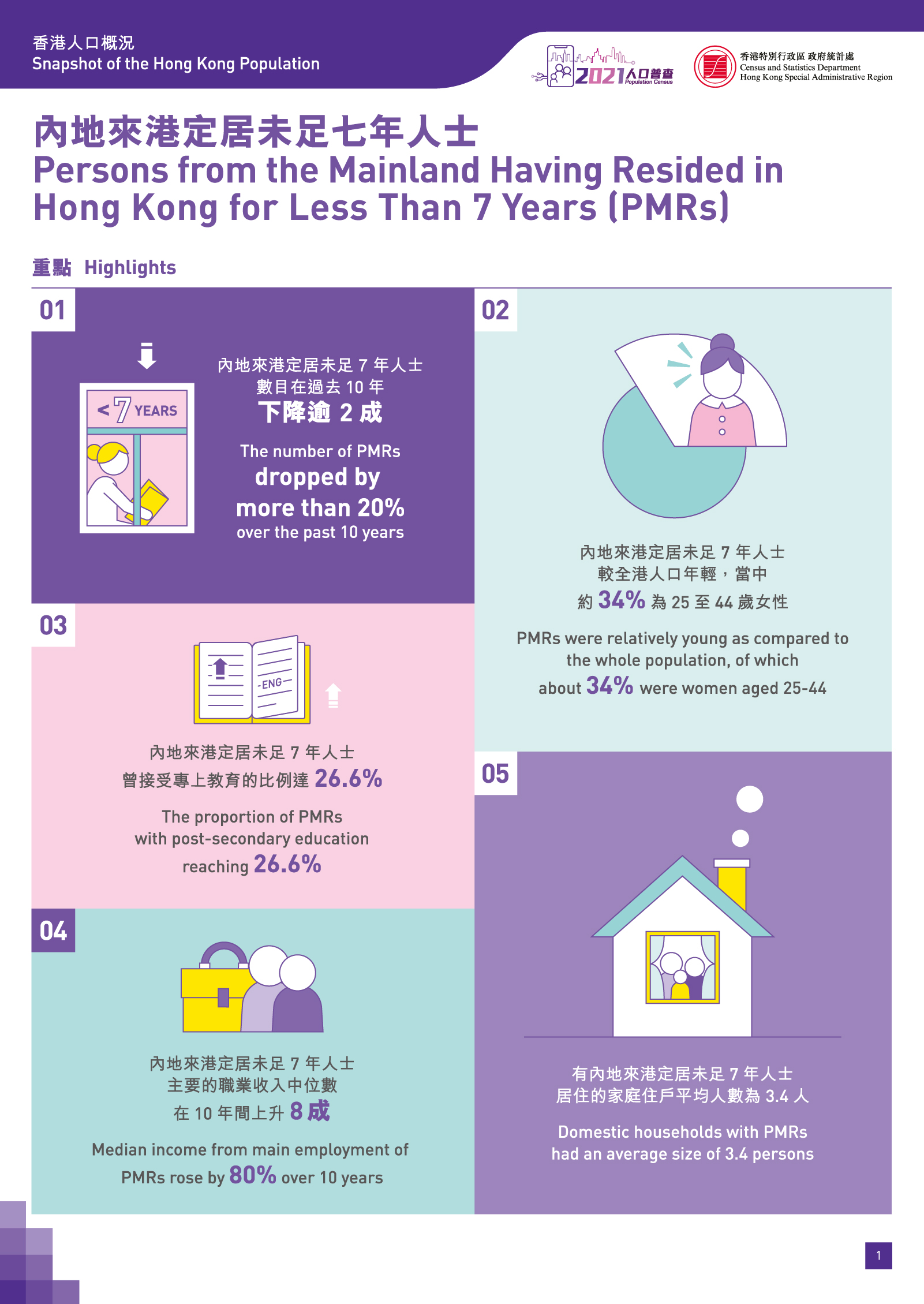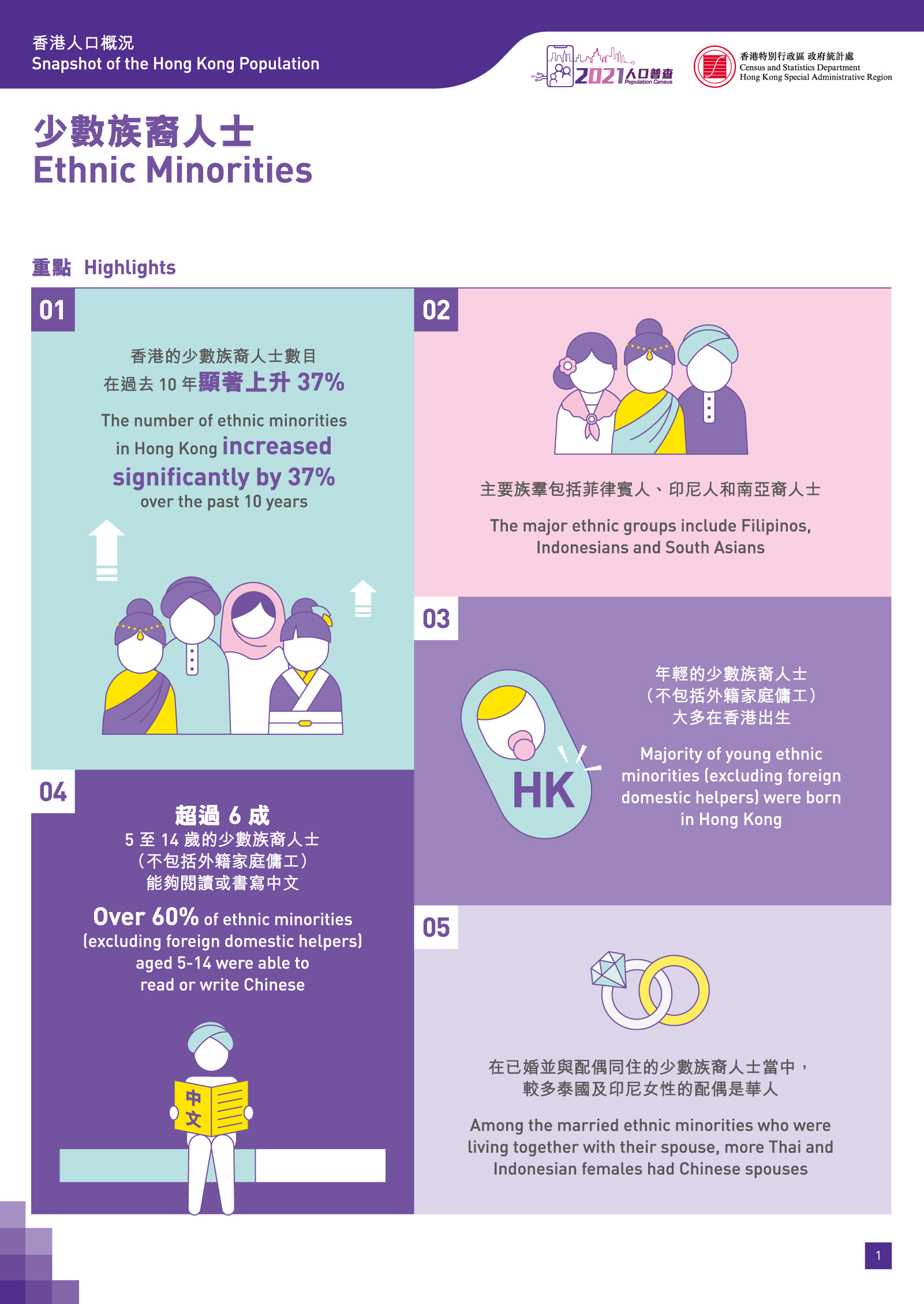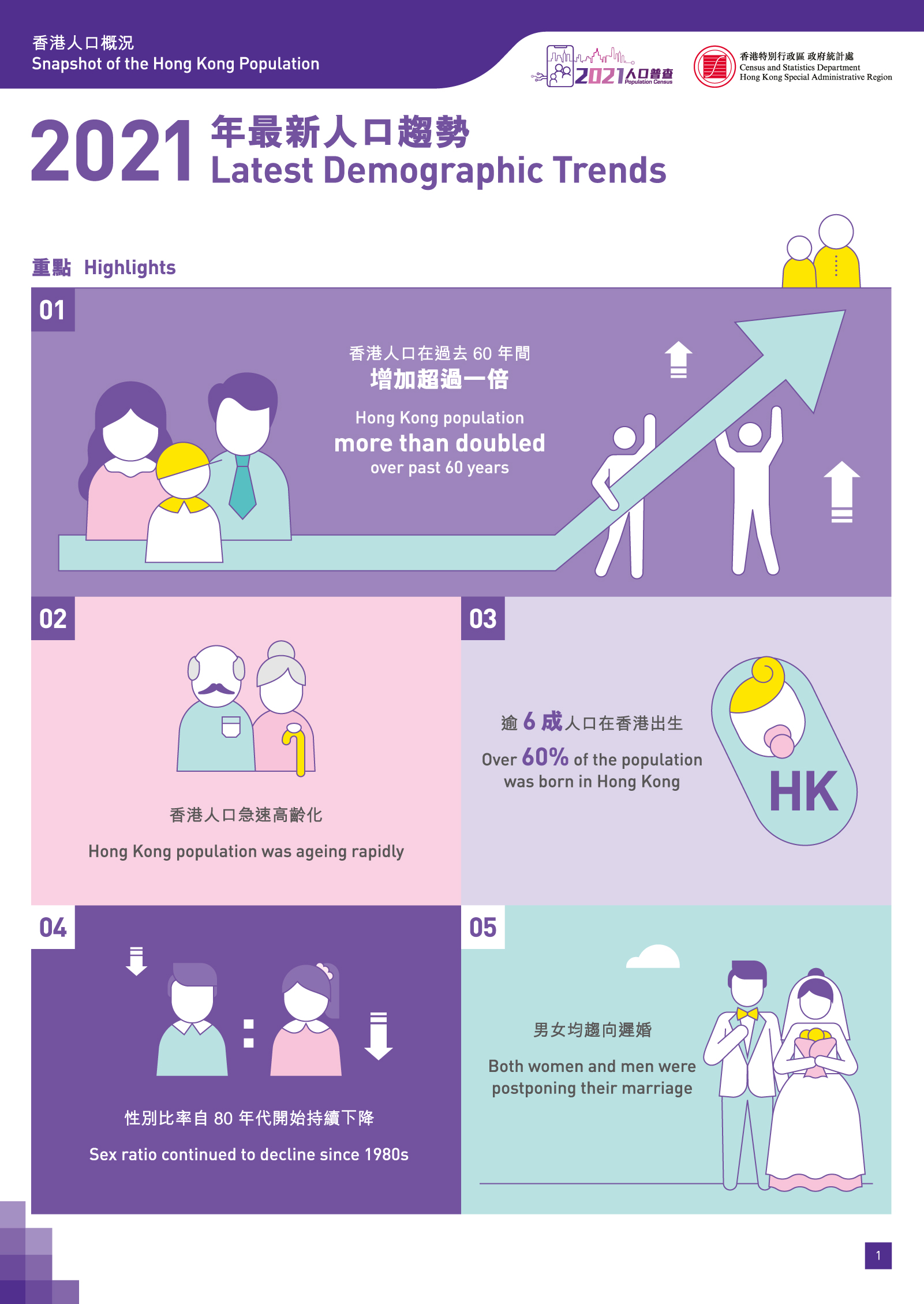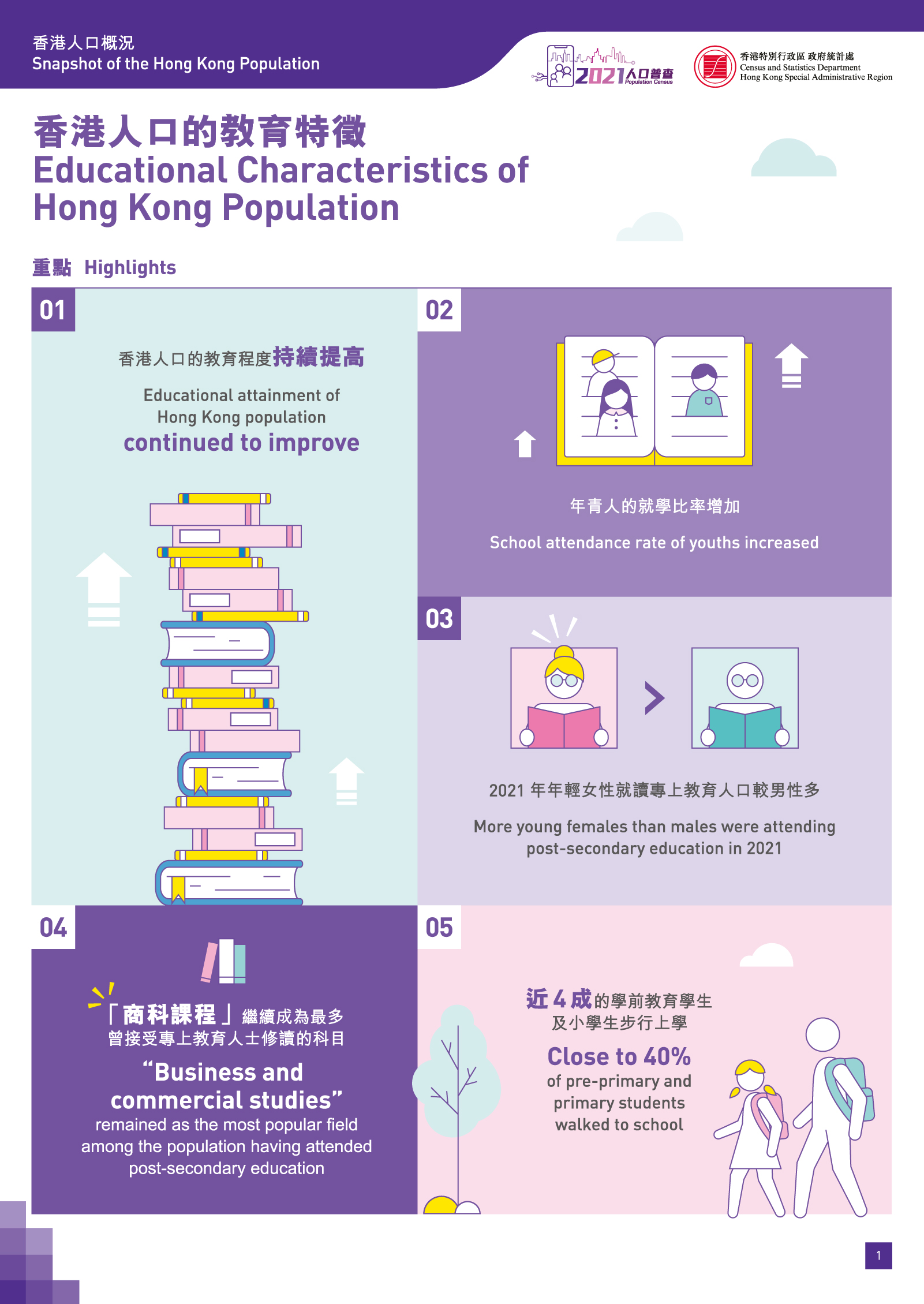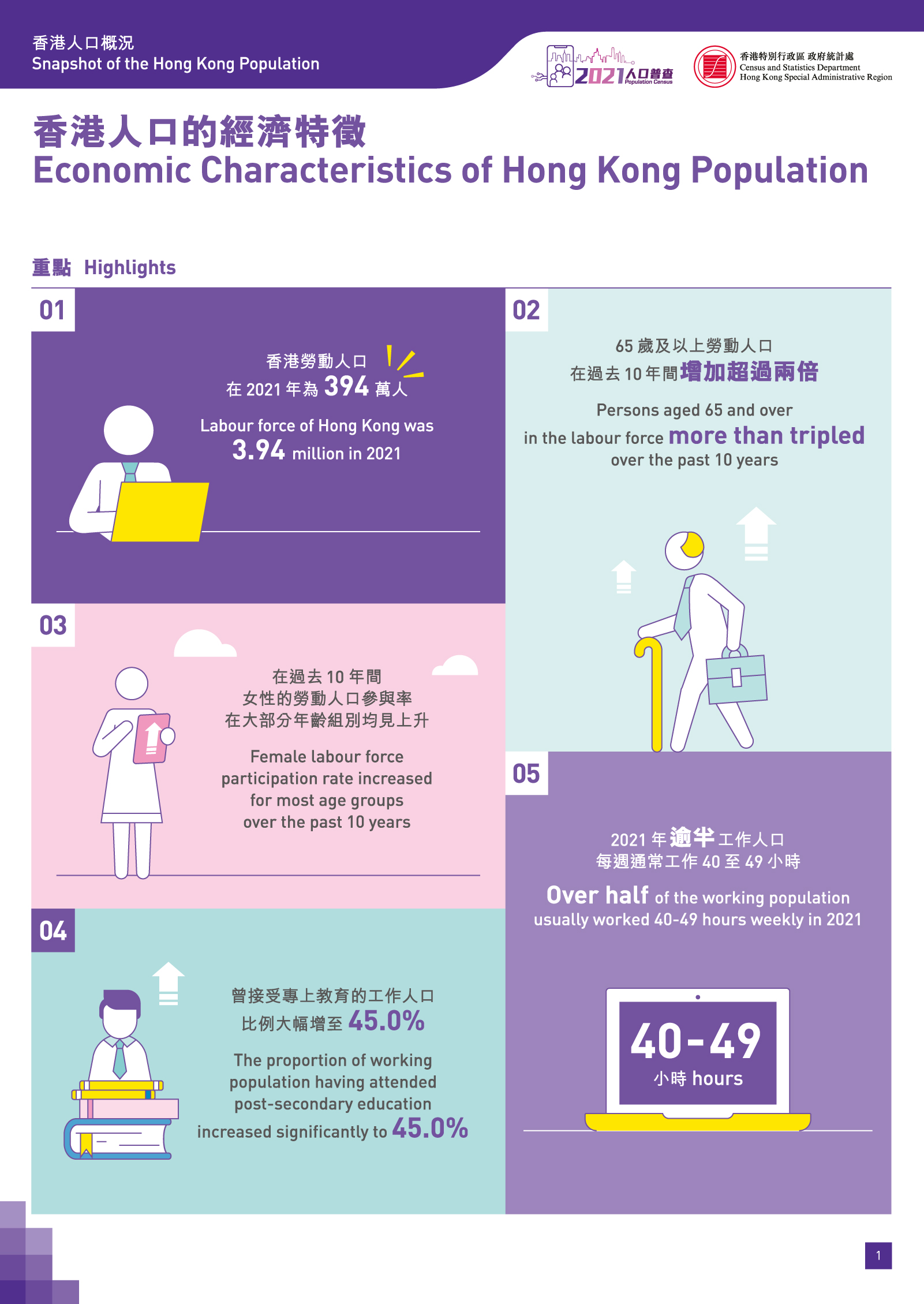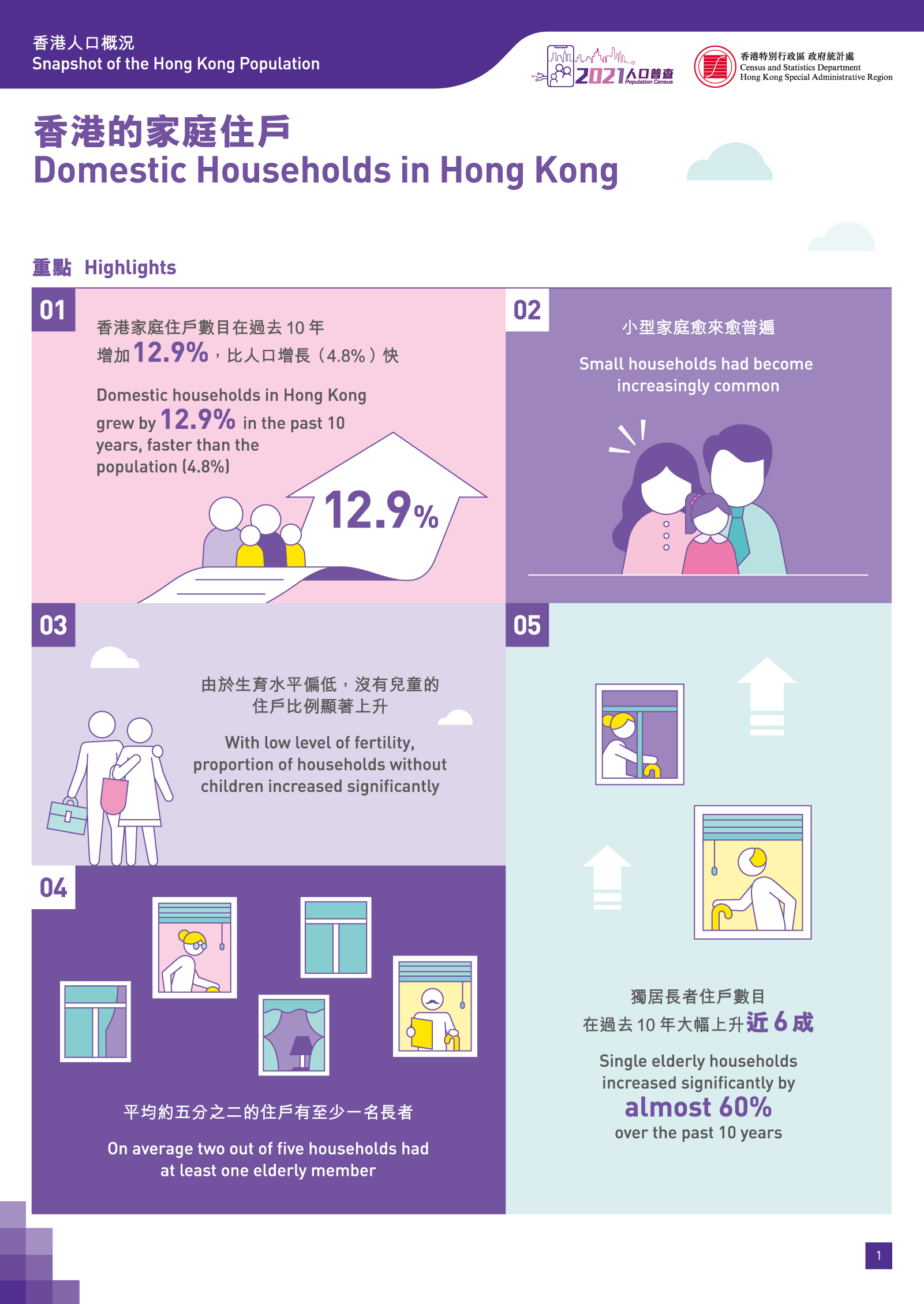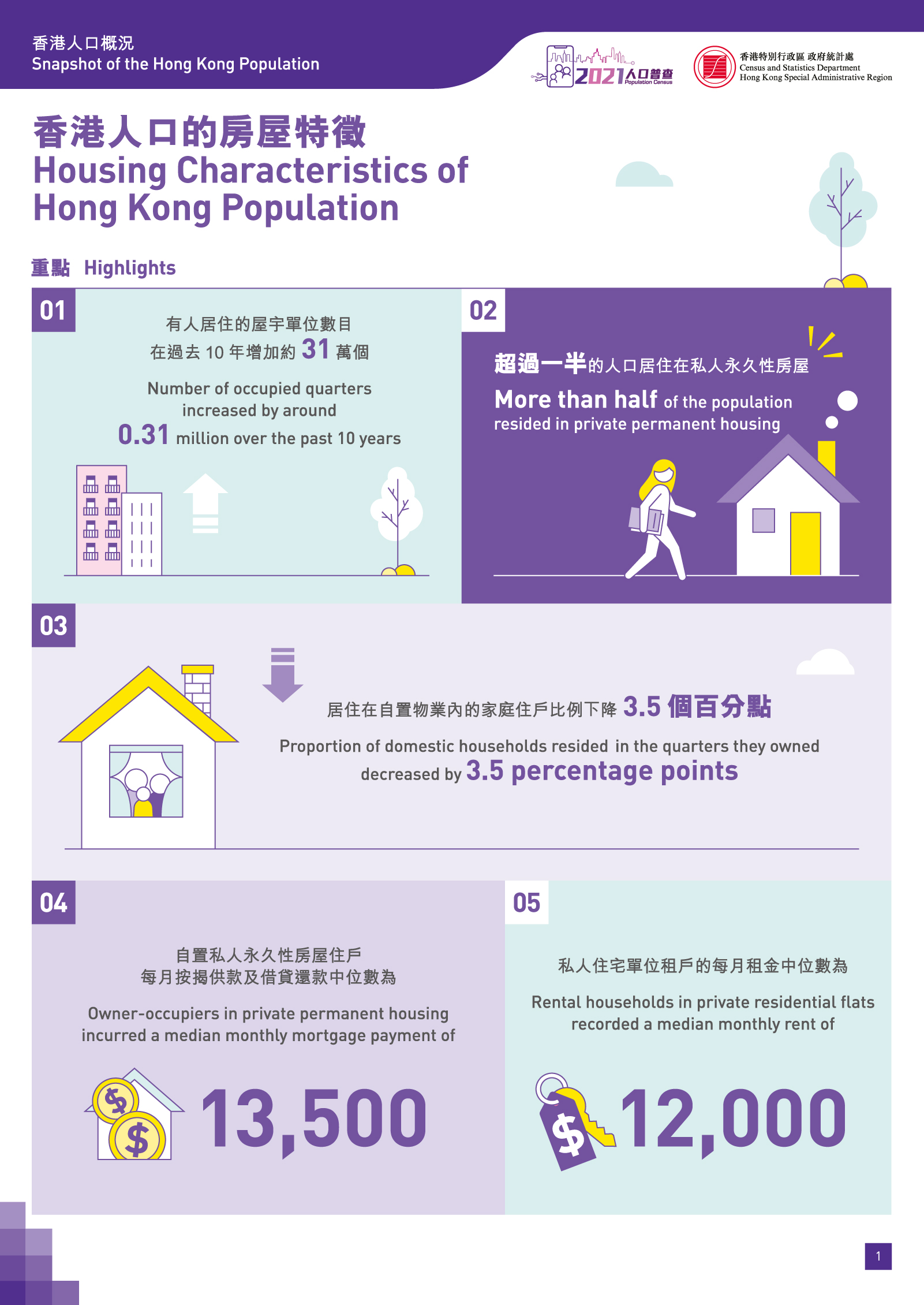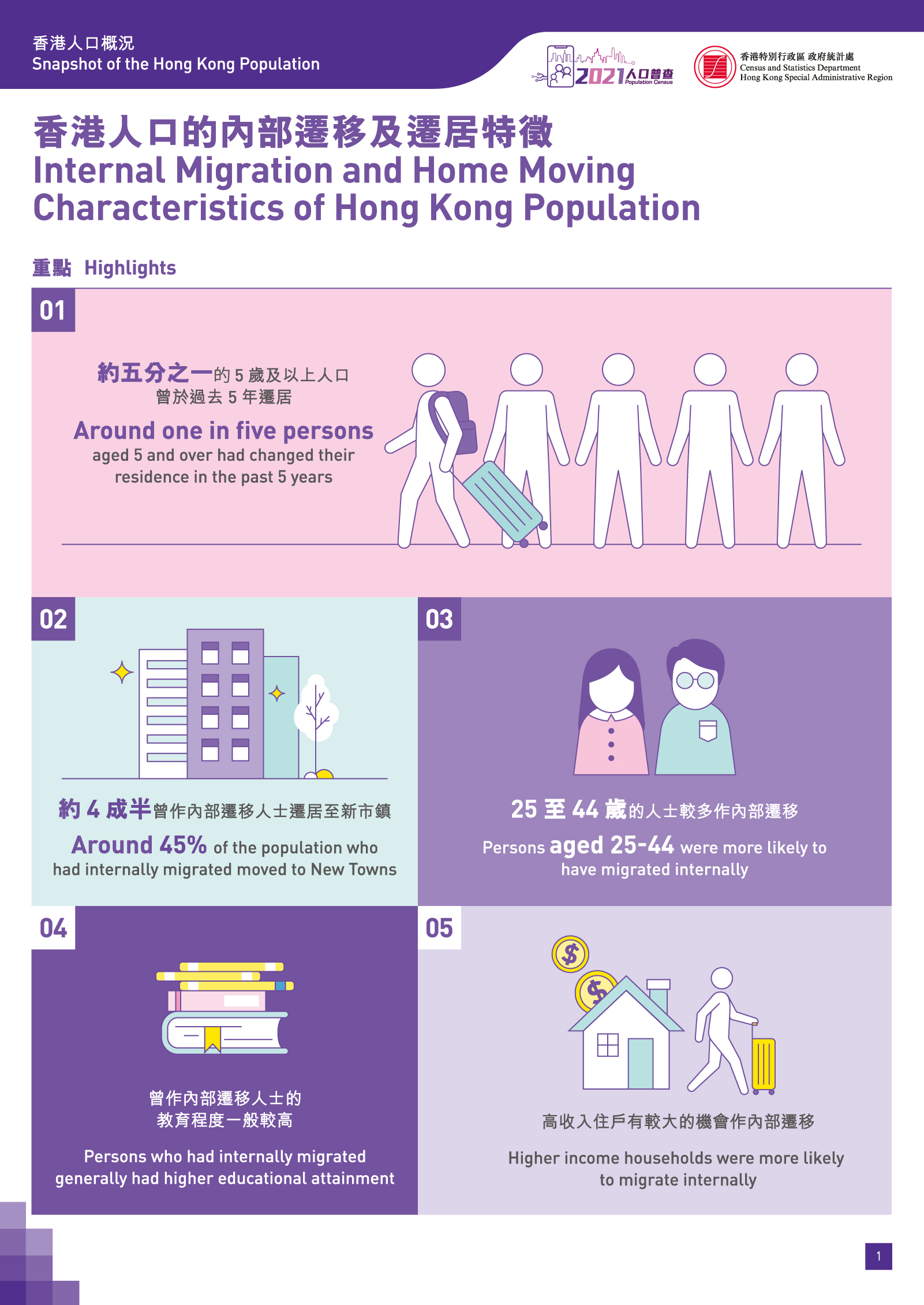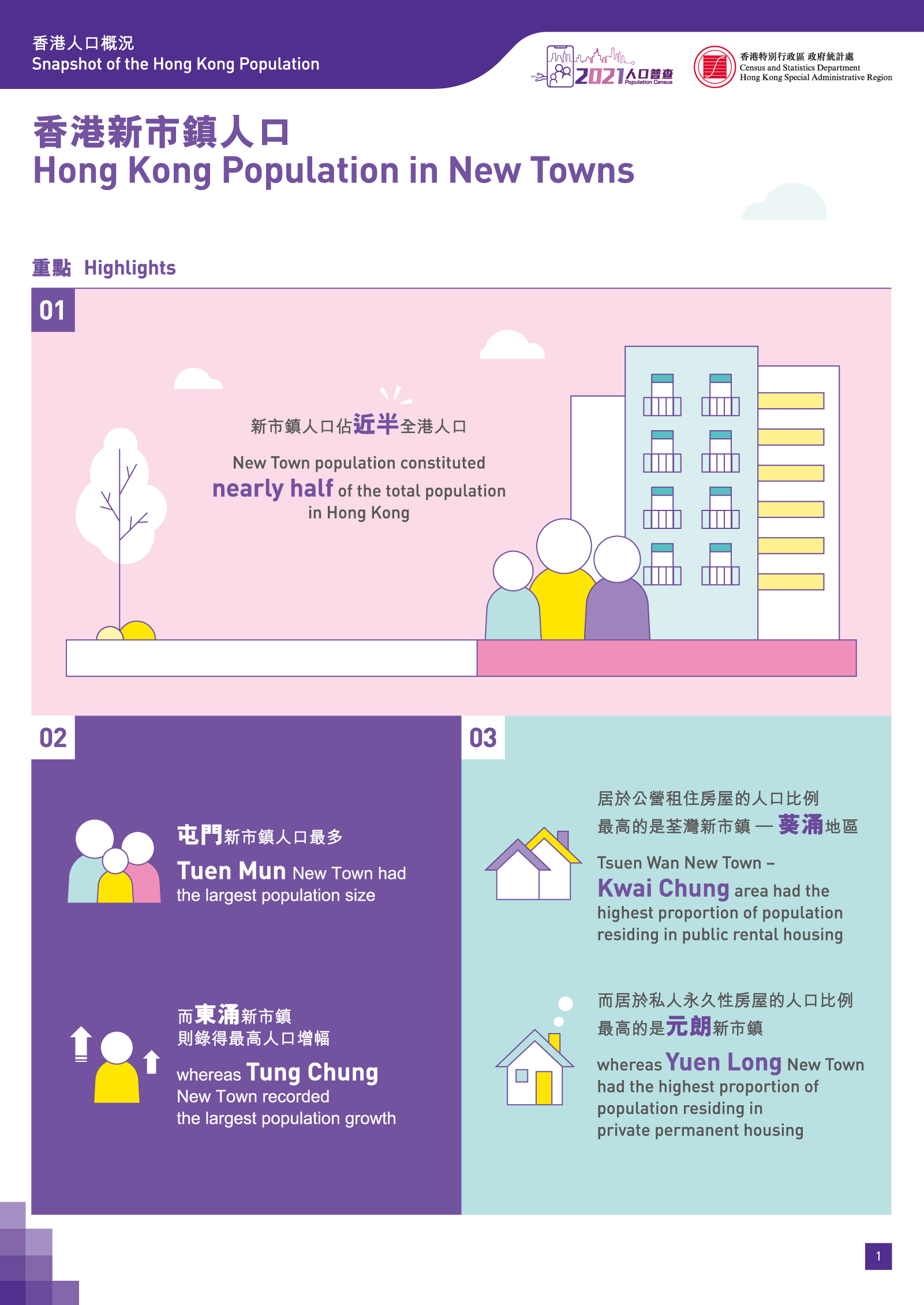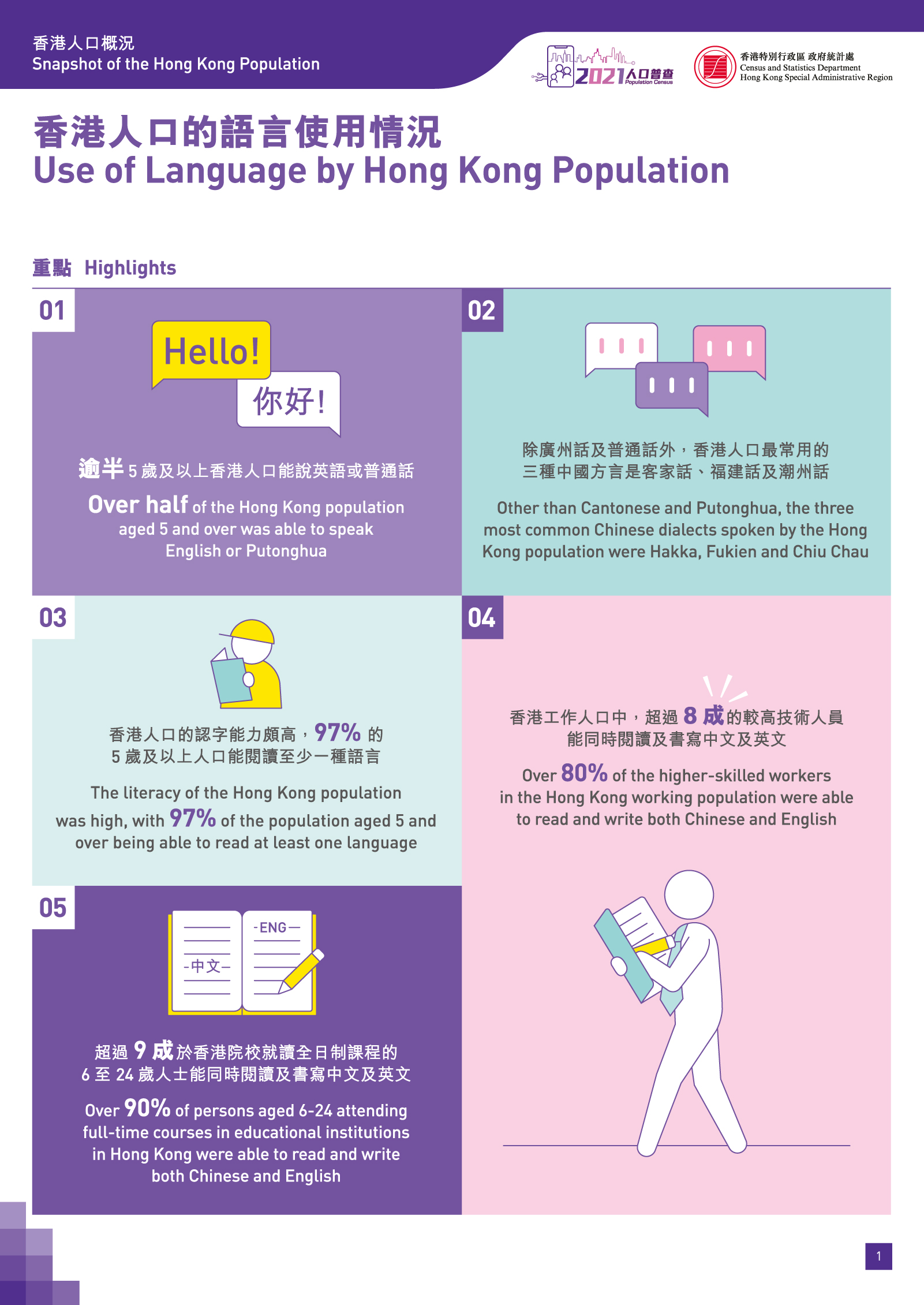Short Articles
Household Income Distribution
- The median employment income of all strata of society improved over the past decade
- Median monthly household income was $27,320 in 2021, increased by 35.2% over the past decade
- Gini Coefficient decreased after discounting the impacts of both population ageing and the change in household size, and taking into account the effects of taxation and social transfer
Children
- Child population in Hong Kong decreased at an average annual rate of 1.2% over the past 30 years
- Ethnic composition of the child population was similar to that of the whole population, with 92.8% of children being Chinese
- Proportion of children aged 5 and over being able to read and write both Chinese and English and being able to speak English/Putonghua were significantly higher than those of all persons aged 5 and over
- Over 60% of children living in private permanent housing
- Sha Tin district had the largest share of children, whereas Islands district had the highest proportion of children
Older Persons
- Hong Kong population ageing continued, the proportion of older persons to the whole population increased to 19.6%
- The elderly labour force in Hong Kong increased significantly over the past decade
- Domestic households with older persons increased significantly by over 50% over the past decade
- 16.6% persons aged 60 and over living in domestic households had long-term care needs
- 80% of persons aged 60 and over living in domestic households and receiving long-term care were living together with their primary carer
Youths
- Youth population in Hong Kong decreased at an average annual rate of 1.0%
- Ethnic composition of the youth population was similar to that of the whole population, with 94.9% of youths being Chinese
- The proportion of youths having attended post-secondary education increased substantially from 46.5% in 2011 to 62.0% in 2021
- The labour force participation rate for youths was 67.9%, higher than that of 57.7% for the whole population aged 15 and over
- The proportion of youths aged 25–34 living with parents increased continuously, with over 60% living with parents
Single Parents
- During 2011 to 2021, the number of single parents decreased from 81 705 to 72 279
- There were a total of 94 508 children aged under 18 living with the 72 279 single parents in 2021
- The proportion of single parents having attended post-secondary education increased substantially from 14.6% in 2011 to 26.0% in 2021
- In 2021, the proportion of the working single parents being managers, professionals and associate professionals was 32.0%, lower than that of the 51.4% for working persons living with child(ren) aged under 18
- While 46.3% of single parents were living in public rental housing in 2021, the corresponding proportion for persons living with child(ren) aged under 18 was only 24.9%
Persons Living in Subdivided Units
- There were some 108 200 SDUs in Hong Kong, accommodating some 215 700 persons, with about 60% SDUs located in Kowloon, concentrating in the Yau Tsim Mong district and the Sham Shui Po district
- Among persons living in SDUs, there were more young to middle-aged persons and less elderly persons
- Among persons living in SDUs, the proportion of non-Chinese was higher than that of the whole population
- The median floor area of accommodation of households living in SDUs was 11.0 square metres
- The median rent to income ratio of households living in SDUs was 32.0%
Persons from the Mainland Having Resided in Hong Kong for Less Than 7 Years
- The number of PMRs dropped by more than 20% over the past 10 years
- PMRs were relatively young as compared to the whole population, of which about 34% were women aged 25-44
- The proportion of PMRs with post-secondary education reaching 26.6%
- Median income from main employment of PMRs rose by 80% over 10 years
- Domestic households with PMRs had an average size of 3.4 persons
Ethnic Minorities
- The number of ethnic minorities in Hong Kong increased significantly by 37% over the past 10 years
- The major ethnic groups include Filipinos, Indonesians and South Asians
- Majority of young ethnic minorities (excluding foreign domestic helpers) were born in Hong Kong
- Over 60% of ethnic minorities (excluding foreign domestic helpers) aged 5-14 were able to read or write Chinese
- Among the married ethnic minorities who were living together with their spouse, more Thai and Indonesian females had Chinese spouses
2021 Latest Demographic Trends
- Hong Kong population more than doubled over past 60 years
- Hong Kong population was ageing rapidly
- Over 60% of the population was born in Hong Kong
- Sex ratio continued to decline since 1980s
- Both women and men were postponing their marriage
Educational Characteristics of Hong Kong Population
- Educational attainment of Hong Kong population continued to improve
- School attendance rate of youths increased
- More young females than males were attending post-secondary education in 2021
- “Business and commercial studies” remained as the most popular field among the population having attended post-secondary education
- Close to 40% of pre-primary and primary students walked to school
Economic Characteristics of Hong Kong Population
- Labour force of Hong Kong was 3.94 million in 2021
- Persons aged 65 and over in the labour force more than tripled over the past 10 years
- Female labour force participation rate increased for most age groups over the past 10 years
- The proportion of working population having attended post-secondary education increased significantly to 45.0%
- Over half of the working population usually worked 40-49 hours weekly in 2021
Domestic Households in Hong Kong
- Domestic households in Hong Kong grew by 12.9% in the past 10 years, faster than the population (4.8%)
- Small households had become increasingly common
- With low level of fertility, proportion of households without children increased significantly
- On average two out of five households had at least one elderly member
- Single elderly households increased significantly by almost 60% over the past 10 years
Housing Characteristics of Hong Kong Population
- Number of occupied quarters increased by around 0.31 million over the past 10 years
- More than half of the population resided in private permanent housing
- Proportion of domestic households resided in the quarters they owned decreased by 3.5 percentage points
- Owner-occupiers in private permanent housing incurred a median monthly mortgage payment of $13,500
- Rental households in private residential flats recorded a median monthly rent of $12,000
Internal Migration and Home Moving Characteristics of Hong Kong Population
- Around one in five persons aged 5 and over had changed their residence in the past 5 years
- Around 45% of the population who had internally migrated moved to New Towns
- Persons aged 25-44 were more likely to have migrated internally
- Persons who had internally migrated generally had higher educational attainment
- Higher income households were more likely to migrate internally
Hong Kong Population in New Towns
- New Town population constituted nearly half of the total population in Hong Kong
- Tuen Mun New Town had the largest population size, whereas Tung Chung New Town recorded the largest population growth
- Tsuen Wan New Town – Kwai Chung area had the highest proportion of population residing in public rental housing, whereas Yuen Long New Town had the highest proportion of population residing in private permanent housing
Use of Language by Hong Kong Population
- Over half of the Hong Kong population aged 5 and over was able to speak English or Putonghua
- Other than Cantonese and Putonghua, the three most common Chinese dialects spoken by the Hong Kong population were Hakka, Fukien and Chiu Chau
- The literacy of the Hong Kong population was high, with 97% of the population aged 5 and over being able to read at least one language
- Over 80% of the higher-skilled workers in the Hong Kong working population were able to read and write both Chinese and English
- Over 90% of persons aged 6-24 attending full-time courses in educational institutions in Hong Kong were able to read and write both Chinese and English
